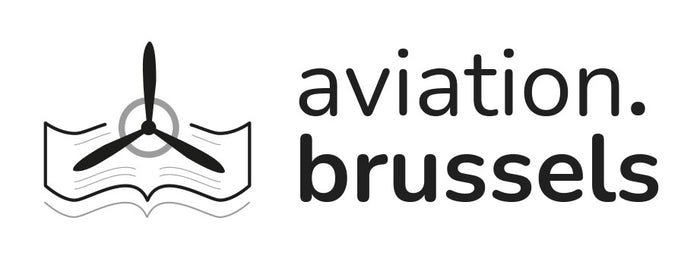ENCYCLOPÆDIA OF AVIATION








Prix régulier 50,00 € TTC 6%
Characteristics
| Book cover finish | Hardcover ( rounded spine binding ), Canvas finish |
| Condition | Used good (cover slightly worn-off, see attached pictures) |
| Number of pages | 642 |
| Published date | 1935 |
| Language | English |
| Edited and Compiled by | Squadron Leader C.G. Burge |
| Editor | Sir Isaac Pitman & Sons Ltd |
Description
CONTENTS
- INTRODUCTORY
- A PICTORIAL REPRESENTATION OF THE CONQUEST OF THE FLIGHT
- The Development of Heavier-Than-Air Machines
- Aero Engines
- The Development of Lighter-Than-Air Machines
- THE ENCYCLOPAEDIA OF AVIATION
- Preface
- Foreword By Sir Richard Glazebook K.C.B.
- List of Leading Articles
- The Encyclopaedia
- Biographies
EXTRACT FROM THE INTRODUCTORY
ROGER BACON, a British philosopher, was probably the first Englishman to speculate on the possibilities of flight, but he never made any attempt to construct any form of flying apparatus. He believed the air had an upper surface, like the sea, on which a suitable form of flying apparatus could float. "Such a machine must be a hollow globe of copper or other suitable metal, wrought extremely thin in order to have it as light as possible. It must then be filled with aetherial air or liquid fire and launched from some elevated point into the atmosphere, when it will float like a vessel on water." That was written in 1250. It was not until the year 1783, however, that the first successful flight was made by a balloon. It is interesting to record that Francesco de Lana had experimented with the germ of the idea which the brothers Montgolfier were to discover more than one hundred years later. De Lana did not undertake the construction of his "vacuum balloon" first proposed in 1670, "apparently because he feared that any attempt to navigate the air would be regarded as impious by the Creator." In his own words-
God would not suffer such an invention to take effect, by reason of the disturbance it would cause to the civil government of men. For who sees not that no City can be secure against attack, since our Ship may at any time be placed directly over it, and descending down may discharge Souldiers; that the same it would happen to private Houses, and Ships on the Sea; for our Ship descending out of the air to the Sails of Sea Ships . . . it may over-set them, kill their men, burn their Ships by artificial Fire- works and Fire-balls. And this they may do not only to ships but to great Buildings, Castles, Cities, with such security that they which cast these things down from a height out of Gun-shot, cannot on the other side be offended by those from below.
-a remarkable prediction.
[…]
PREFACE OF « THE ENCYCLOPAEDIA »
This Encyclopædia is partly the outcome of the many questions asked almost daily in conversation with people in aviation, with young students and with the youth of this country, and from the hundreds of letters of inquiries which are received yearly in the offices of publishers of aeronautical journals and books, aircraft manufacturers and aeronautical institutions. The idea of this Encyclopædia was conceived many years ago, but the development of aviation generally has been so rapid during the past few years and events have moved so swiftly that it was considered inadvisable to produce a work of this magnitude until many important issues had been clarified. That position has now been reached and we are confident that in presenting the facts, ancient and modern, in a form that will make them readily understood and more easily accessible the success of this Encyclopædia is assured.
( ... ) We have endeavoured to cater for everyone interested or engaged in Aviation - the boy and girl ; the young student ; the air traveller and the user of air transport ; air - transport operators and their staffs ; manufacturers and their staffs ; commercial pilots ; private owners ; ground engineers ; airport and aerodrome staffs ; Air Force personnel ; and all those who are connected by profession with, or are merely interested in, some aspect or other of aviation. Our task at first seemed an insuperable one, but we are confident that in the main we have achieved success, and that all who come into possession of this volume will find most, and we hope all, of what they require. (...)
C.G.B.








